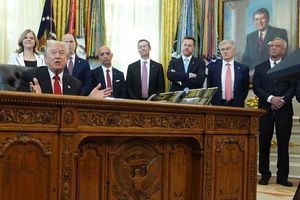The collapse of peace talks between Pakistan and Taliban-ruled Afghanistan in Istanbul this week has sent ripples across South Asia, exposing the deep fractures and hidden deals that shape the region’s fragile security dynamics. What was initially portrayed by Pakistani officials as a case of Indian interference has, according to multiple reports including those from TOLO News and India Today, turned out to be a story of secret agreements, drone warfare, and shifting alliances.
After four days of intense negotiations in the Turkish city, the talks fell apart in late October 2025, leaving a tenuous ceasefire along the Durand Line and over 200 dead from recent border clashes. The stakes could hardly have been higher: with violence simmering and both sides suffering losses, mediators from Qatar and Turkey hoped to broker a lasting agreement. But as the dust settled, it became clear that the real obstacle was not the familiar specter of Indian meddling, but rather Islamabad’s covert arrangement with the United States to allow drone operations from Pakistani soil into Afghanistan.
According to TOLO News, Afghan negotiators arrived in Istanbul with a straightforward demand: Pakistan must provide a written commitment to stop violating Afghan airspace and prevent any foreign—namely, U.S.—drone flights over Afghan territory. In exchange, Kabul pledged to crack down on anti-Pakistan militant groups, including the Tehrik-i-Taliban Pakistan (TTP), operating across the border. It was a classic quid pro quo, designed to address both sides’ security concerns.
For a brief moment, hope flickered. Negotiators on both sides indicated progress, and there were reports that the Pakistani delegation was open to considering Kabul’s terms. But then, as reported by both TOLO News and India Today, everything changed after a key phone call—believed to be from Pakistan’s high command. Suddenly, the Pakistani side insisted it had “no control” over the U.S. drone operations and could not make any commitments to halt them. The about-face left mediators “surprised,” as one source put it, and the Afghans deeply frustrated.
It was during these talks that Pakistan, for the first time, openly admitted to having an agreement with the United States allowing drone strikes from its territory. As TOLO News reported, “Pakistan admitted during these negotiations that it has an agreement with the United States allowing drone strikes, and claimed it cannot break that agreement.” This revelation, confirmed by Afghan journalist Tameem Bahiss, explained Islamabad’s sudden reluctance to sign on to Kabul’s demands. The secret was out: Pakistan’s hands were tied by its own strategic commitments to Washington.
Yet, in the aftermath of the breakdown, Pakistan’s Defence Minister Khawaja Asif took to the airwaves with a different narrative. On Geo News, Asif accused India of orchestrating the collapse, declaring, “The people in Kabul pulling the strings and staging the puppet show are being controlled by Delhi.” This claim, however, was not supported by the sequence of events described by Afghan and international media. As India Today pointed out, “the real reason behind the talks hitting a dead end was Pakistan’s inability to prevent US drone strikes inside Afghanistan using Pakistani soil.”
Asif’s rhetoric didn’t stop at blaming India. In a pointed warning to the Taliban, he invoked the memory of the US-led assault on Tora Bora in 2001, saying, “Let me assure them that Pakistan does not require to employ even a fraction of its full arsenal to completely obliterate the Taliban regime and push them back to the caves for hiding. If they wish so, the repeat of the scenes of their rout at Tora Bora, with their tails between the legs, would surely be a spectacle to watch for the people of the region,” as reported by Dawn.
Behind these headlines lies a deeper story of shifting alliances and uneasy partnerships. Under U.S. President Donald Trump, Pakistan has strengthened its defense ties with Washington. This was underscored by Prime Minister Shehbaz Sharif’s rushed visit to the White House, accompanied by Army Chief Asim Munir. Trump, for his part, has demanded the return of the Bagram Airbase from Taliban-controlled Afghanistan and warned that “bad things will happen” if the U.S. does not regain it. Sharif has gone so far as to praise Trump’s “leadership” and even nominated him for the Nobel Peace Prize, citing his role in the India-Pakistan ceasefire as a “historic achievement.”
The context for these failed negotiations is a border region on edge. The war between Pakistan and Afghanistan reignited in early September 2025, after escalating attacks by the TTP on Pakistani forces led to deadly clashes. Islamabad responded with air and drone strikes deep inside Afghanistan, targeting cities like Kabul and Kandahar. The toll was grim: over 200 dead on both sides, including dozens of civilians—women and children among them—killed in an eastern marketplace, according to the Taliban. Afghanistan’s Defence Minister Mullah Mohammad Yaqoob Mujahid issued a stern warning on October 30, 2025: “Any fresh violation of Afghan airspace would be met with a reciprocal response.”
To many observers, there is a bitter irony in Pakistan’s position. As Kabul-based journalist Ali M Latifi noted on X, “Pakistan admitting the US conducts drone strikes from its territory is quite telling. Pakistan was a massive victim of Barack Obama’s drone wars itself.” Now, the tables have turned, with Islamabad renting out its territory as a launchpad for U.S. operations, even as it faces accusations of using its own drones and jets against the Taliban-led Afghanistan, which lacks an air force of its own.
The border itself, the Durand Line, remains a flashpoint. Drawn by colonial Britain, it splits the Pashtun homeland between the two countries—a division never recognized by Afghanistan. This line has become both a literal and symbolic frontier for the unresolved grievances and shifting loyalties that continue to fuel conflict.
As the dust settles on the failed Istanbul talks, both sides are left with more questions than answers. For Pakistan, the revelation of its secret drone deal with the U.S. has undermined its credibility as a negotiating partner and exposed the limits of its sovereignty. For Afghanistan, the continued specter of foreign drones and cross-border strikes remains a source of anger and instability. And for the broader region, the episode is a stark reminder of how international alliances and covert agreements can derail even the most hopeful attempts at peace.
With the border simmering and trust in short supply, the prospects for a breakthrough remain uncertain. What is clear, however, is that the real story behind the failed peace talks is not about India or any outside scapegoat—it’s about the hard realities of power, strategy, and the deals made in the shadows.



